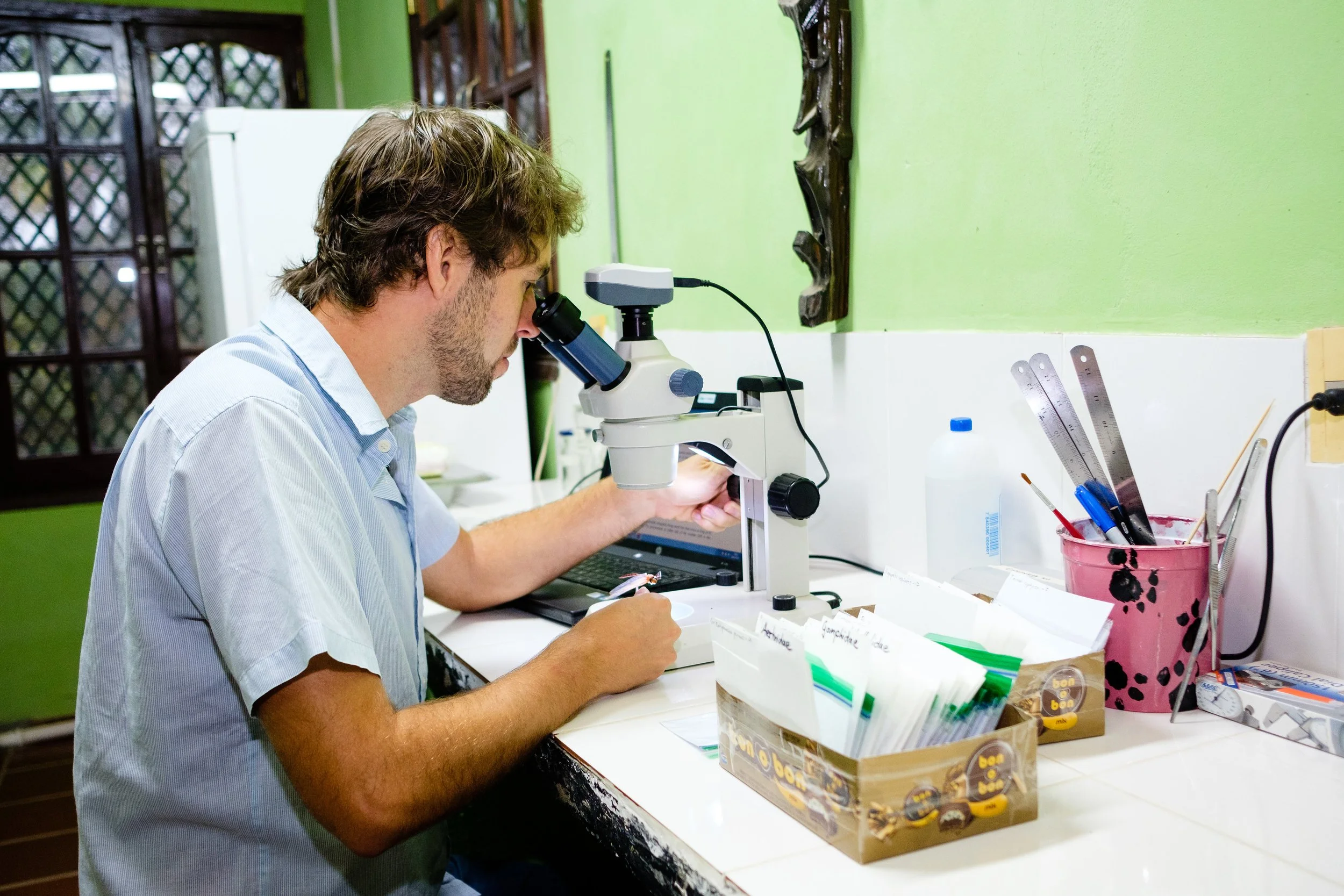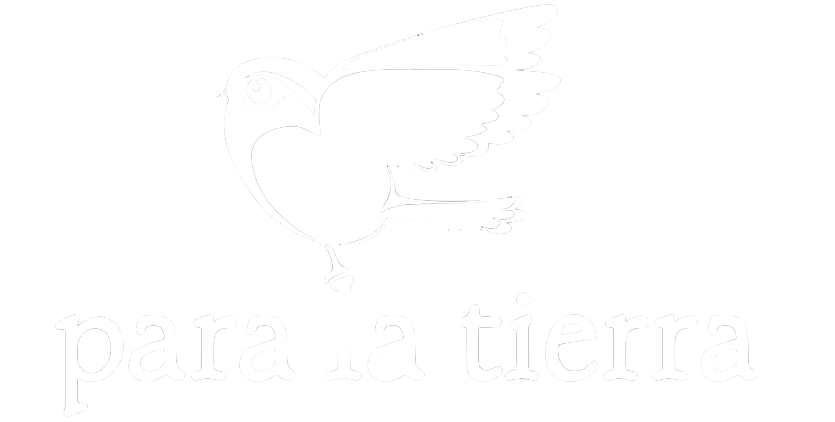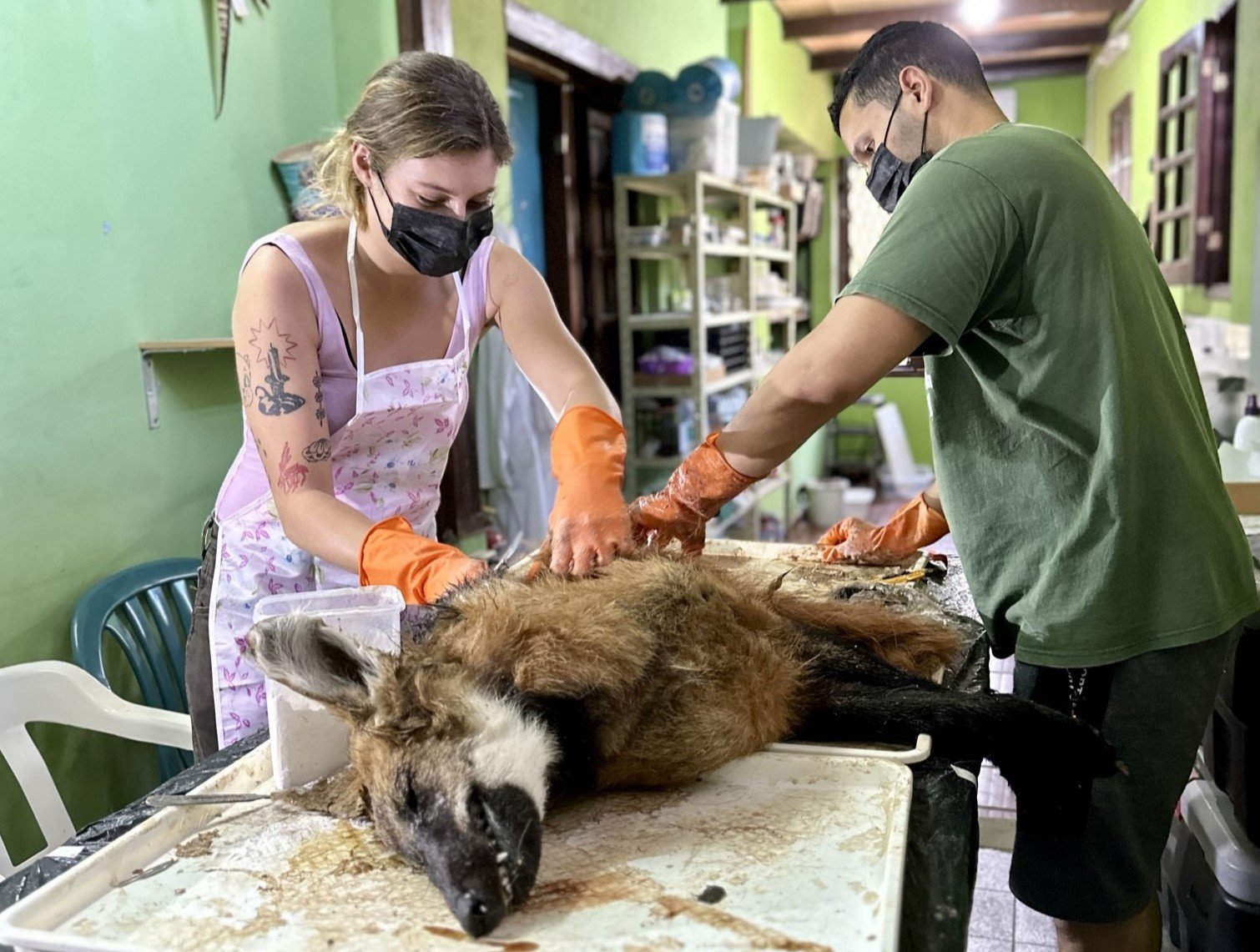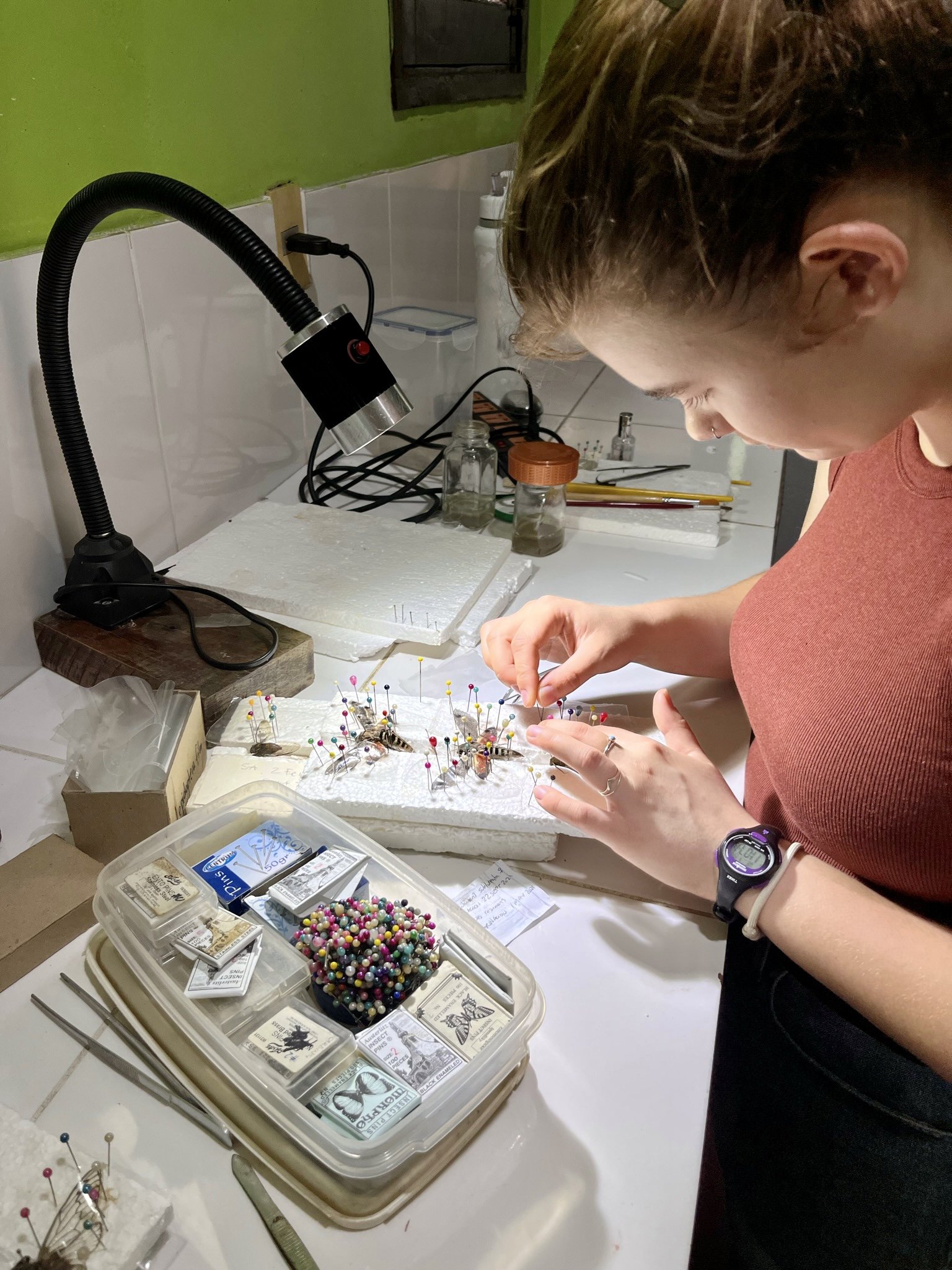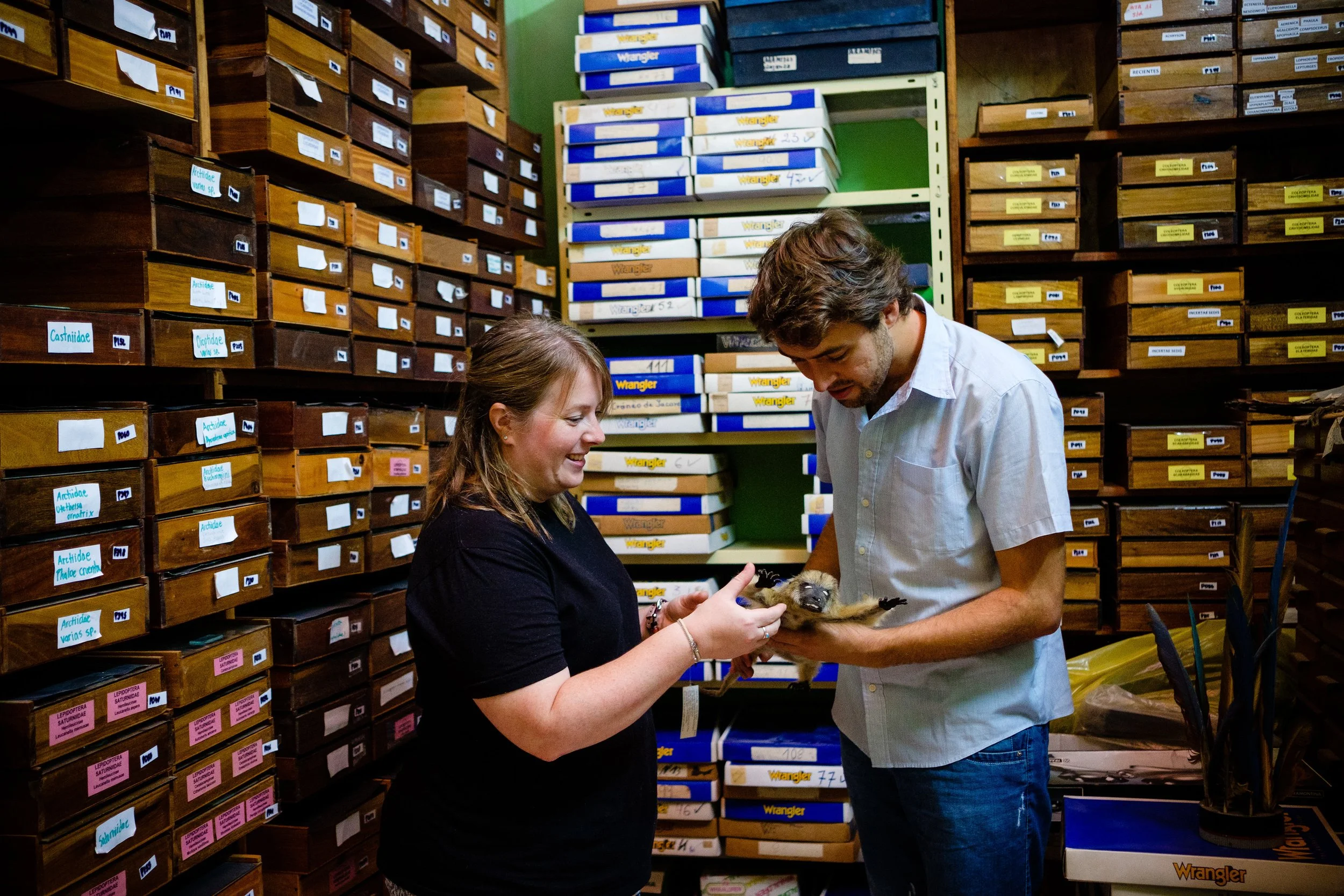
Museum and scientific reference collection internships
We care for the country’s second largest natural reference collection, with over 30,000 specimens from different taxonomic groups. This is one of the most important resources for conservation and natural history, in a country where relatively little is known about its biodiversity.
Join our international team of researchers and learn more about working in a scientific reference collection.
Taxidermy Internship
As a museum taxidermy intern, you’ll learn how to prepare different taxonomic groups like mammals, birds, reptiles and insects with the help of our museum curator and taxonomist.
This includes activities such as:
Measuring and manipulating dead animals
Skinning and stuffing small to medium sized mammals and birds
Counting scales on snakes
Extracting organ tissue for our tissue collection
Pinning insects, such as beetles, butterflies and ants
Taxonomy Internship
As a taxonomy intern, you can work with different taxonomic groups such as mammals, specifically Chiroptera, Rodentia or Didelphidae, reptiles or amphibians, insects or other invertebrates such as spiders, scorpions, snails and aquatic macroinvertebrates.
You’ll learn how to identify specimens and how to sort a scientific reference collection in a taxonomic order. This includes activities such as:
Following dichotomous keys
Carrying out literature reviews on certain taxa
Working on scientific manuscripts for publishing
Working closely with collection specimens
Our museum internships are designed to provide young professionals with the opportunity to gain hands-on experience of working with a zoological collection, while sharing moments with an international team of professionals.
If your interest lies in another museum-related field, you might also be able to intern with that. Get in touch to find out more.
Why PLT?
Our interns finish the programme taking away a plethora of new skills, a professional reference and one heck of an experience to share at their next interview. But they also leave behind a great deal; all intern projects are directly involved in the conservation of this threatened habitat.
Scientific studies of the area help raise awareness of the ecological importance of Ñeembucú at national and international levels. Our projects are regularly published in scientific journals and many interns make their way onto the author line.
PLT achievements
160+ scientific papers published
120 new records for Paraguay
10 new species discovered
Intern achievements
150 careers in conservation
35 scientific articles published/ under review
15 PhDs and PhD candidates
Apply to become a PLT intern
